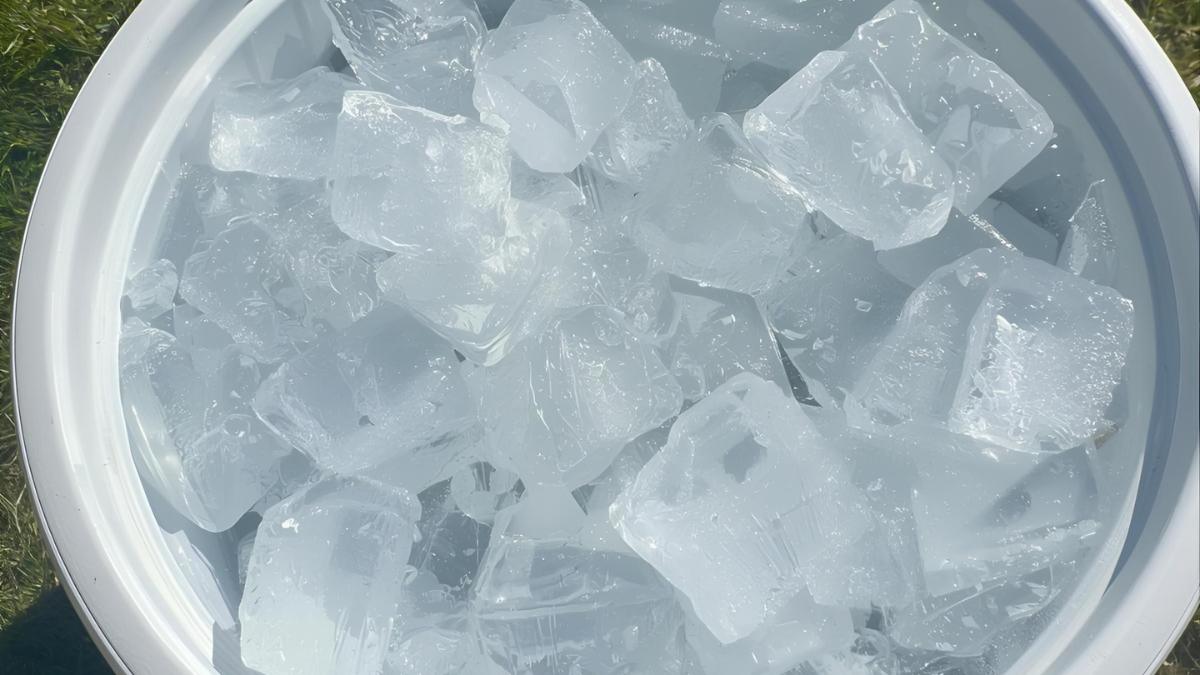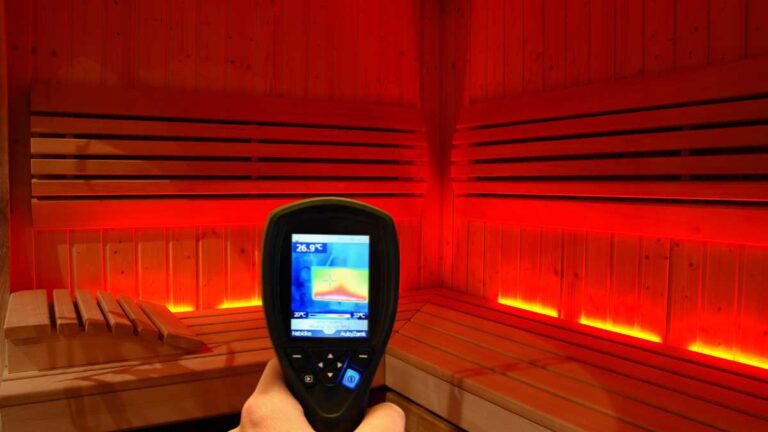How Much Ice For Ice Bath? Right Amount For Recovery!

Last Updated on September 25, 2025
How cold should your ice bath really be? And more importantly, how much ice for ice bath recovery is actually necessary to feel the benefits without overdoing it? These are questions I hear often, and they usually come from people wanting to balance wellness with safety.
An ice bath can feel like a shock at first, but when done correctly, it becomes a deeply supportive ritual for both body and mind. As a registered nurse and certified wellness consultant, I’ve guided clients through the calming power of cold immersion.
What matters most isn’t just the temperature—it’s finding the right amount of ice to reach that sweet spot of recovery. Let’s walk through it together in a way that feels both practical and mindful.
The Purpose Of Ice In Ice Baths
Cold immersion isn’t new—it’s been used for centuries to soothe sore muscles, sharpen focus, and support overall wellness and recovery. The role of ice in this process is simple yet powerful: it lowers the water temperature enough to trigger the body’s natural healing response.
So, why does the amount of ice matter? This is what defines how cold an ice bath would be. Too little and the water barely cools enough to make a difference. Too much and you risk shock, discomfort, or cutting your session short.
What this really means is that the right balance of ice allows you to reap recovery benefits while staying safe. Think of the ice not just as a chilling factor but as the key that unlocks inflammation relief, better circulation, and even a grounded mental reset.
Read Also: How Cold Should An Ice Bath Be?
How Much Ice For Ice Bath Do You Need?

For quick clarity, let me give you the straightforward answer:
Most people need about 20–40 pounds of ice to cool a standard bathtub of water down to 50–59°F (10–15°C)
This range isn’t random, and it’s based on both research and real-world practice. A 10-pound bag of ice from the store will usually drop water a few degrees, but for a full tub, you’ll likely need at least two bags, sometimes up to four.
That’s enough to create the cooling effect your body needs without making the bath unbearable.
Why not more? Because colder doesn’t always mean better. Your muscles and nervous system respond best in that safe zone, and staying within it helps you avoid the risks of extremes. Think of it as tuning your ice bath for balance rather than intensity.
Factors That Affect How Much Ice You’ll Need
The truth is, there’s no single “one-size-fits-all” answer to ice amounts. Several variables shape how much ice you’ll actually need for an effective session. Let’s break them down clearly.
Measuring Ice by Pounds or Bags
Most ice is sold in 10–20 pound bags. For a standard bathtub, you’ll usually need two to four bags depending on water volume.
A smaller tub might be fine with 20 pounds, while a larger one may need closer to 40 pounds. Thinking in bags keeps things simple and prevents overcomplication.
Adjusting for Goals
What’s your aim—athletic recovery, or mindful relaxation? Athletes may prefer a slightly colder bath with more ice to reduce inflammation quickly.
If your goal leans toward stress relief or evening recovery, less ice can still deliver benefits without feeling overwhelming. Your tolerance and intent guide the balance.
Read Also: How To Keep Ice Bath Water Clean?
Ideal Ice-to-Water Ratio And Temperature Range

Before you dump ice into the tub, it helps to know the ratio that keeps things safe and effective. The key isn’t just piling in more ice—it’s creating the right balance with water.
A good rule is about one-third ice to two-thirds water. This usually drops the temperature to the safe, research-backed range of 50–59°F (10–15°C). That’s the sweet spot most studies highlight for recovery.
- Too little ice → the water hovers near room temp, offering minimal effect.
- Too much ice → you risk shock, discomfort, or bailing early.
- Balanced ratio → reliable cooling with room to relax.
Checking with a simple bath thermometer makes this process even easier. It takes out the guesswork and helps you stay in that safe zone.
Practical Tips For Preparing Your Ice Bath At Home
Setting up your ice bath doesn’t have to feel complicated. With a few mindful steps, you can create a reliable routine that feels supportive instead of stressful.
Start by filling your tub halfway with cool tap water. Add ice gradually, mixing it in so the temperature drops evenly. Keep a thermometer nearby to check your progress. If you’re aiming for recovery after a workout, the target is that 50–59°F window.
Looking for budget-friendly options? Try freezing large water bottles and reusing them, or using reusable ice packs to cut costs. Some people also use smaller portable tubs for legs or feet, especially useful if you don’t want to fill a full bathtub every time.
Read Also: Ice Bath Before Or After Workout
Safety Guidelines And Common Mistakes To Avoid

Ice baths can be powerful, but they only work if you approach them safely. You don’t have to push your body to extremes, you just need to find balance and support recovery.
- Signs of Too Much Cold Exposure
Pay attention to your body. Numbness, dizziness, or shivering that feels uncontrollable are clear signs you’ve gone too far. Stepping out immediately is the right choice.
- Common Mistakes with Ice Amounts
The biggest mistake? Thinking more ice equals better results. Overloading the tub makes the water too cold, forcing your muscles into stress mode instead of recovery. Another mistake is skipping the thermometer. Why? Guesswork often leads to extremes.
Quick Reference Table: Ice Needs by Tub Size
| Tub Size | Water Volume | Recommended Ice | Resulting Temp Range |
| Small (¾ full) | ~40 gallons | 20 lbs (2 bags) | ~55–59°F |
| Medium (standard tub) | ~60 gallons | 30 lbs (3 bags) | ~52–56°F |
| Large (deep tub) | ~80 gallons | 40 lbs (4 bags) | ~50–54°F |
Research from the Frontiers in Physiology suggests that immersion at 50–59°F for 10 minutes provides recovery benefits without unnecessary risk.
Read Also: How Long Should You Be In An Ice Bath?
The Bigger Picture – Ice Baths And Holistic Recovery
Ice baths aren’t a cure-all—they’re one part of a wider wellness and recovery practice. The cold is just one tool to support your body, not the whole toolkit.
Pairing ice baths with gentle yoga stretches helps loosen muscles once the initial chill fades. Deep breathing practices during immersion calm the nervous system and enhance resilience. Even something as simple as journaling after a bath can anchor the emotional benefits.
What this really means is that the ice is only half the story. The real value comes when you combine it with practices that care for both body and mind. That’s where recovery feels not just physical—but restorative and grounding.
Final Thoughts
The question of how much ice for ice bath doesn’t need to feel overwhelming. Most people find balance with 20–40 pounds of ice, cooling water to the safe range of 50–59°F.
What matters most isn’t the exact number—it’s staying present, listening to your body, and treating the bath as part of a holistic recovery practice.
Ice baths, when approached mindfully, become more than cold water. They turn into a ritual of resilience, grounding, and renewal. Keep it simple, stay safe, and let the chill support your well-being.
Sources
- Lateef and Fatimah (2010). Post exercise ice water immersion. Is it a form of active recovery?
- Hai Wang, et al. (2025). Impact of different doses of cold water immersion (duration and temperature variations) on recovery from acute exercise-induced muscle damage: a network meta-analysis
https://www.frontiersin.org/journals/physiology/articles/10.3389/fphys.2025.1525726/full






